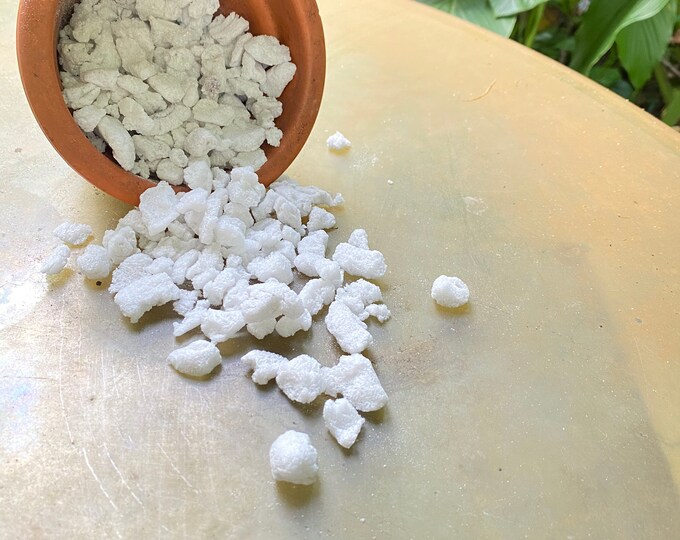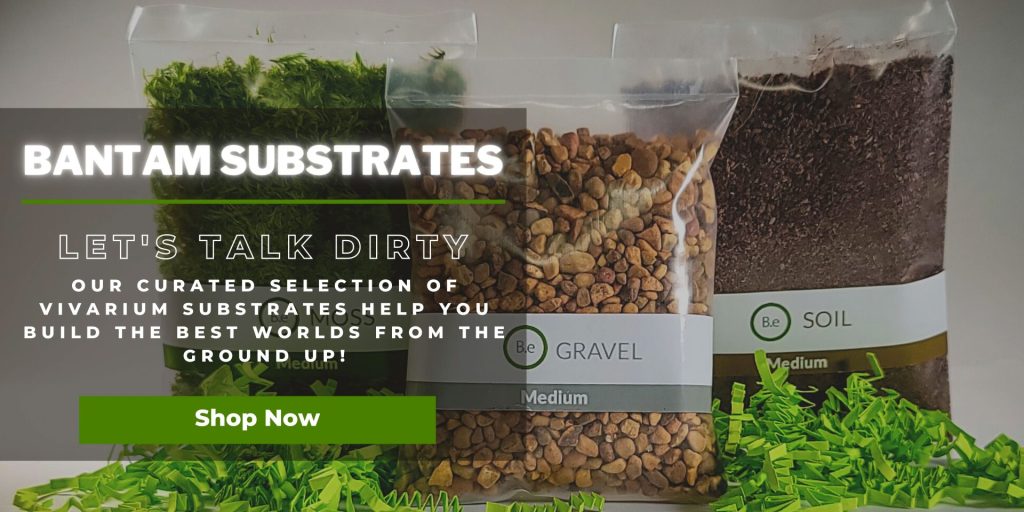Perlite is one of the most popular soil amendments used in vivariums.
Originating from volcanic ash deposits found in several regions around the world, perlite is mined in large quantities, formed into small particles, and commercialized for use in gardening, horticulture, and terrarium setups.
Perlite soil is known for its diverse benefits, including its ability to hold water and nutrients without becoming anaerobic and its ability to retain oxygen and provide aeration.
This article will cover all aspects of perlite, from its composition to its usage in creating a thriving terrarium environment.
Table Of Contents:
ToggleWhat Is Perlite Soil?
Perlite soil, also known as pearlstone and puffed volcanic glass, is a lightweight soil amendment made up of rock and sand.
Originating from volcanic ash deposits, the material is heated until expanded and puffed up like kernels on a popcorn cob.
The end result is a white, lightweight material with a large internal surface area that exhibits excellent drainage and aeration for root systems.


Perlite Soil Facts
Perlite Soil was discovered in 1948 in the United States and has since been used in numerous horticultural applications around the world.
This lightweight soil can be obtained from volcanic ash deposits located in several countries, including Australia, Israel, South Africa, and the United States.
Perlite is the perfect soil for terrariums, providing aeration and water retention without becoming anaerobic and retaining oxygen and airflow.
Description
Perlite soil has a unique cellular structure that makes it lightweight yet resilient.
Its particles range in size and are irregular in shape, allowing them to hold both moisture and oxygen at the same time.
This allows water to be slowly absorbed while providing just the right amount of aeration.
The soil’s white hue reflects light, making it an attractive addition to terrarium setups.
Habitat
Perlite soil is originally found in volcanic ash deposits located in several regions around the world, making its origins quite diverse.
The deposits are formed when magma, a molten, highly viscous rock, is spewed into the sky after a volcanic eruption and, upon returning to the earth, solidifies into ash.
This ash is then super-heated until it expands, resulting in the puffed material we now recognize as perlite.
Environmental Influence
Due to its nature, perlite soil does not significantly alter pH levels within the soil.
It is considered neutral soil, meaning it has no significant effect on the potential of acidity in the soil.
This is helpful when trying to establish an optimal pH balance for the terrarium environment, as it can act as a foundation.
At the same time, additional soil amendments can be used to balance the pH level to one that works best for a particular terrarium setup.
Vivarium Type
Perlite soil is commonly used as an amendment to a variety of substrates, such as soils or aquarium gravel.
It is great for creating a thriving environment for reptiles and arachnids, thanks to its water retention and aeration properties, but can also work well in planted terrariums, helping to hold moisture while allowing adequate space for root systems.
It is also great for creating mosaic artworks, as the white hue of the soil reflects light and will easily contrast with dark colors to create an interesting contrast that can complement the natural colors of the terrarium.
Here is a recommended list of vivarium types compost is commonly used in:
- Paludariums – Half aquatic/ half terrain-based enclosure.
- Terrariums – Fully terrain-based enclosures with little to no aquatic features.
- Aquariums – Fully aquatic-based enclosure with no terrain features.
Vivarium Usage
Perlite soil has a myriad of uses. In terrariums, it is commonly used as an amendment for soils, as it helps to reduce compaction and improve aeration.
It can also be used in vertical gardening arrangements, to provide structure and resilience during times when water is scarce.
Additionally, perlite can be used as a soil alternative for standard aquarium gravel, providing both water retention and aeration when used in the water line.
Advantages
Perlite soil has several advantages over other soil types, primarily its lightweight nature and resilient cellular structure.
Due to its expansive nature and airy composition, it allows aeration while still retaining moisture and preventing anaerobic conditions.
The consistent texture of perlite and its neutral pH reduces the need for additional soil amendments while providing structure, allowing terrarium owners to create an environment that is suitable for their terrarium inhabitants.
Disadvantages
The primary downside to using perlite soil is its tendency to blow away easily.
This can become a problem in extremely windy environments, or in terrariums with open-top designs.
Additionally, perlite does not contain any natural fertilizer and lacking in organic material, meaning additional supplements may be required for terrarium plants to thrive.
Buy Perlite Soil
When selecting perlite soil, it is important to buy from a reputable retailer, as many online stores claim to sell perlite, but in reality, they are selling dust or pulverized materials.
Always check the label to make sure the material is pure, clean, and free of any impurities.
Click the image below to find out more about the current price and other relative info:


Perlite Soil Preparation & Tips
Before using perlite soil in a terrarium, it is essential to soak it in a solution of warm water, containing either a few drops of bleach or hydrogen peroxide, to sanitize it.
Then, it is ideal to rinse the soil with fresh, clean water, being sure to discard any residue and allow it to dry before adding it to the terrarium.
Also, it is essential to ensure the particles are uniform in size and composition.
Too many large particles can settle at the bottom of the tank, and too many fine particles can clog pumps and other filter components.
Perlite Soil Substitutes
Perlite soil has many alternatives, depending on the terrarium setup and design, as well as the terrarium inhabitant.
Some alternatives to perlite are coconut coir, aquarium soil, orchid bark, orchid potting mix, and pea gravel.
Each of these soil alternatives provides its own benefits, allowing terrarium owners to create the perfect environment for their reptile, amphibian, or insect inhabitant.
Conclusion
Perlite soil is an excellent soil amendment for terrariums, providing water retention and aeration without becoming anaerobic.
With its neutral pH, it can act as the foundation for soils, ensuring an optimal pH balance for the setup.
Additionally, its lightweight nature and large internal surface area make it an attractive addition to terrariums as well.
With proper sanitization and selection, perlite can help create a thriving vivarium for years to come.
Frequently Added Questions
Perlite soil is made by crushing perlite rocks into very small pieces. The crushed perlite is then mixed with other soil components like organic matter, sand, and fertilizer to create a light, well–draining type of soil. Perlite can also be added to existing soil to improve drainage and soil structure.
Perlite soil helps to improve soil aeration, drainage, and water retention in potted plants. It can provide lightweight soil perfect for growing delicate seedlings and allows air and water to get to root systems more easily.
Perlite can also be used as a soil amendment during soil mixes to promote better drainage and reduce compaction.
It is recommended to mix 1 part perlite to 4 parts soil when preparing soil for indoor plants. Therefore, you would add 1/4 cup of perlite to every 1 cup of soil.
Yes, you can add too much perlite to soil. Too much perlite can decrease the overall nutrition and mineral content present in the soil. Adding more than 10–30% of perlite to the soil can decrease the soil’s capacity to absorb, retain, and even release water. It is important to use perlite at the correct ratio for a healthy and thriving garden.
It depends on the application. Vermiculite is well known for its ability to retain water and nutrients, making it great for soil amendments, hydroponic systems, and use in seed starting mixes. Perlite, on the other hand, is ideal for horticultural use because it doesn‘t hold onto water and is lightweight. Both provide plant roots with essential oxygen exchange and can be used successfully in any soil or growing medium.
No, perlite does not cause root rot. Instead, it aids in water drainage and aeration, making it an ideal soil amendment for plants vulnerable to root rot. Perlite also helps to balance soil pH, and can even prevent bacterial and fungal growth when used in the right quantity.







